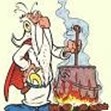O prémio de guru do ano, segundo Aaron Task
1 Mensagem
|Página 1 de 1
O prémio de guru do ano, segundo Aaron Task
Aqui vos deixo mais um excelente artigo de Aaron Task que, nesta altura do ano, costuma atribuir o prémio de guru do ano.
"Giving Credit to the Chart Readers"
By Aaron L. Task
Senior Writer
12/30/2002 07:43 AM EST
"Fair to say, 2002 was the toughest year since the bubble peaked for those market participants once euphemistically dubbed "gurus," particularly those with a fundamental bent.
For that, and a variety of other reasons, this column's "Guru of the Year" for 2002 is: technical analysis.
This is the third year the column has sought to honor those who've distinguished themselves in a given year. Banc of America's Thomas McManus won the inaugural Guru of the Year award in 2000, while the late Bill Meehan was posthumously named GOTY in 2001.
The selection of a market discipline rather than a specific individual -- as in the past two years -- speaks to the rising ascendancy of technical analysis in both Wall Street and academic circles, the latter coinciding with a questioning of so-called efficient market theories.
To our knowledge, no single technician forecast all stock market gyrations in 2002 as well as its ultimate losses. But a variety of individual technicians did make some well-timed market calls.
"Technical analysis did a terrific job of identifying the primary lows this year in July and October, and the risks evident in the wake of those March and August highs," recalled John Bollinger, founder of BollingerBands.com. "It gets back to the idea of swing trading; there were four big swings this year and it was really important to be on the right side of them."
Certainly, some fundamental analysts had a good handle on the market in 2002. But despite the broader carnage in stocks, following the advice of stalwart bears meant missing out on some serious moneymaking opportunities from the long side. Most notably, the S&P 500 registered more than 20% gains from its July lows to August highs, and from its October lows to late-November/early December highs. Meanwhile, the Nasdaq Composite rose more than 30% from its October lows, and many low-priced tech shares produced far larger percentage gains.
Still, on the most basic level, the growing appeal of technical analysis stems from the realities of the bear market, now 3 years old.
"Put simply: Technical analysis gives you places to get out, whereas if you wait for fundamentals to turn in a primary bear market, you're screwed," said Jeffrey Saut, chief market strategist at Raymond James. "In a bear market, your mistakes hurt because the wind is in your face."
Looking back, Saut named Cisco and Intel as two stocks that fell precipitously before the companies' fundamentals really soured. More recently, he noted that many fundamental analysts -- including Raymond James' own -- had buy or strong buy ratings on Circuit City as it fell from above $30 earlier this year to under $7 in recent weeks.
"Technical analysis had you out in the mid-$20s," Saut said. "If you're using it correctly, technical analysis will prevent the big losses. That's pretty simplistic but that's the nuts and bolts of it."
Money managers were going nuts this year as the bear market persisted and expanded. Increasingly, more of them turned to technical analysis, according to several technicians, who said demands for their services from institutional clients increased noticeably in 2002 vs. prior years. Some said they met with clients who never before cared about technicals, although none would specify names, as there's still a taboo against chart readers in some fundamentalist circles.
"This year seemed to be a year in which more people were willing to take a look" at technical analysis, said Rick Bensignor, chief technical analyst at Morgan Stanley, one of those sources in greater demand from more clients in 2002. "My guess is it's because other standard analysis tools have continued to fail and not given [money managers] the type of information that led to good decision-making."
The problem with fundamental analysis in a bear market is that it's hard to make a fundamental case to buy stocks if the economy is stagnant, corporate profits are slumping, and equity valuations remain historically high. Yet, that's precisely what Wall Street's so-called major strategists argued at the beginning of 2002.
With the exception of former J.P. Morgan strategist Doug Cliggott, every major Wall Street strategist forecast 2002 would be a strong up year for stocks and scant few of them adopted postures during the year that accurately reflected the bear market. (Heading into 2003, only two Street strategists -- Merrill Lynch's Richard Bernstein and J.P. Morgan's Carlos Asilis -- forecast the S&P 500 would finish below current levels. Cliggott, now head of U.S. research at Brummer & Partners, also forecasts a fourth year of declines.)
Not surprisingly then, serious damage has been done to the reputation and influence of traditional fundamental analysts. A few years ago, Goldman Sachs' Abby Cohen could roil markets with a mere utterance. Now, her pronouncements barely cause a ripple, which brings us back to the growing appeal of technical analysis.
Chartists in Ivory Towers
For the record, I'm totally agnostic about the sometimes silly, sometimes serious "fundamentalists vs. techies" debate that often occurs in RealMoney.com's Columnist Conversation. Whatever works for you is fine, although my observation is that the best money managers use a combination of technical and fundamental analysis.
"There has to be a marriage of the two; 98% of portfolio managers you walk in on to tell a fundamental story, the first thing they do is punch up a chart," said Saut. "Are they technicians? They'd use a Ouija board if they thought it'd improve performance."
To a shrinking, but still sizable number of investors, technical analysis is akin to a Ouija board, Magic 8-Ball or reading entrails. Certainly, that has long been the view of most academics, although that too is slowly starting to change.
Currently, there are more than 20 business schools offering accredited courses in technical analysis vs. less than five in 1996, according to the Market Technicians Association (a nonprofit organization that has helped fund and provide course materials for such programs).
"Right now, the academic literature is still very much in its infancy, to get a better understanding of the pluses and minuses of technical analysis," said Andrew Lo, director of the laboratory for financial engineering at MIT's Sloan School of Management.
Lo is at the forefront of that effort, having co-authored a research paper published in the August 2000 Journal of Finance that found "several technical indicators do provide incremental information and may have some practical value."
The study focused on indicators such as the head-and-shoulders pattern, which "most academics dismissed out of hand as being irrelevant," Lo recalled. Using more than 30 years of returns on a large variety of U.S. equities, the study found the H&S pattern, among others, "adds incremental value."
The study also uncovered an interesting phenomenon: Technical analysis provides more incremental value for Nasdaq stocks vs. NYSE or Amex-traded names, and that is "most pronounced" in the last five to 10 years, the professor said. The implication is that Nasdaq stocks are more likely to be held by short-term traders, who are more likely to employ technical analysis. Lo agreed with that conjecture, but said it's just that, until proven.
In conjunction with his work on technical analysis, Lo also coauthored a 1999 book entitled "A Non-Random Walk Down Wall Street." In title and substance, the book contradicts the Random Walk theory, which is based on the notion that prices fully reflect all available information. Or, in other words, that the financial markets are efficient.
"When we first wrote on the rejection of random walk [in 1998] , it was extremely controversial, and we got a lot of flak," Lo said. "Now, it's part of the orthodoxy that there are short-term departures from efficient markets, driven by fluctuations in supply-demand that ultimately get smoothed out in the long run, but in the short run can create violations in what people think of market efficiency."
Technical analysis is designed to pinpoint those short-term departures, which is why it shone in an otherwise dismal year. "
(in www.realmoney.com"
"Giving Credit to the Chart Readers"
By Aaron L. Task
Senior Writer
12/30/2002 07:43 AM EST
"Fair to say, 2002 was the toughest year since the bubble peaked for those market participants once euphemistically dubbed "gurus," particularly those with a fundamental bent.
For that, and a variety of other reasons, this column's "Guru of the Year" for 2002 is: technical analysis.
This is the third year the column has sought to honor those who've distinguished themselves in a given year. Banc of America's Thomas McManus won the inaugural Guru of the Year award in 2000, while the late Bill Meehan was posthumously named GOTY in 2001.
The selection of a market discipline rather than a specific individual -- as in the past two years -- speaks to the rising ascendancy of technical analysis in both Wall Street and academic circles, the latter coinciding with a questioning of so-called efficient market theories.
To our knowledge, no single technician forecast all stock market gyrations in 2002 as well as its ultimate losses. But a variety of individual technicians did make some well-timed market calls.
"Technical analysis did a terrific job of identifying the primary lows this year in July and October, and the risks evident in the wake of those March and August highs," recalled John Bollinger, founder of BollingerBands.com. "It gets back to the idea of swing trading; there were four big swings this year and it was really important to be on the right side of them."
Certainly, some fundamental analysts had a good handle on the market in 2002. But despite the broader carnage in stocks, following the advice of stalwart bears meant missing out on some serious moneymaking opportunities from the long side. Most notably, the S&P 500 registered more than 20% gains from its July lows to August highs, and from its October lows to late-November/early December highs. Meanwhile, the Nasdaq Composite rose more than 30% from its October lows, and many low-priced tech shares produced far larger percentage gains.
Still, on the most basic level, the growing appeal of technical analysis stems from the realities of the bear market, now 3 years old.
"Put simply: Technical analysis gives you places to get out, whereas if you wait for fundamentals to turn in a primary bear market, you're screwed," said Jeffrey Saut, chief market strategist at Raymond James. "In a bear market, your mistakes hurt because the wind is in your face."
Looking back, Saut named Cisco and Intel as two stocks that fell precipitously before the companies' fundamentals really soured. More recently, he noted that many fundamental analysts -- including Raymond James' own -- had buy or strong buy ratings on Circuit City as it fell from above $30 earlier this year to under $7 in recent weeks.
"Technical analysis had you out in the mid-$20s," Saut said. "If you're using it correctly, technical analysis will prevent the big losses. That's pretty simplistic but that's the nuts and bolts of it."
Money managers were going nuts this year as the bear market persisted and expanded. Increasingly, more of them turned to technical analysis, according to several technicians, who said demands for their services from institutional clients increased noticeably in 2002 vs. prior years. Some said they met with clients who never before cared about technicals, although none would specify names, as there's still a taboo against chart readers in some fundamentalist circles.
"This year seemed to be a year in which more people were willing to take a look" at technical analysis, said Rick Bensignor, chief technical analyst at Morgan Stanley, one of those sources in greater demand from more clients in 2002. "My guess is it's because other standard analysis tools have continued to fail and not given [money managers] the type of information that led to good decision-making."
The problem with fundamental analysis in a bear market is that it's hard to make a fundamental case to buy stocks if the economy is stagnant, corporate profits are slumping, and equity valuations remain historically high. Yet, that's precisely what Wall Street's so-called major strategists argued at the beginning of 2002.
With the exception of former J.P. Morgan strategist Doug Cliggott, every major Wall Street strategist forecast 2002 would be a strong up year for stocks and scant few of them adopted postures during the year that accurately reflected the bear market. (Heading into 2003, only two Street strategists -- Merrill Lynch's Richard Bernstein and J.P. Morgan's Carlos Asilis -- forecast the S&P 500 would finish below current levels. Cliggott, now head of U.S. research at Brummer & Partners, also forecasts a fourth year of declines.)
Not surprisingly then, serious damage has been done to the reputation and influence of traditional fundamental analysts. A few years ago, Goldman Sachs' Abby Cohen could roil markets with a mere utterance. Now, her pronouncements barely cause a ripple, which brings us back to the growing appeal of technical analysis.
Chartists in Ivory Towers
For the record, I'm totally agnostic about the sometimes silly, sometimes serious "fundamentalists vs. techies" debate that often occurs in RealMoney.com's Columnist Conversation. Whatever works for you is fine, although my observation is that the best money managers use a combination of technical and fundamental analysis.
"There has to be a marriage of the two; 98% of portfolio managers you walk in on to tell a fundamental story, the first thing they do is punch up a chart," said Saut. "Are they technicians? They'd use a Ouija board if they thought it'd improve performance."
To a shrinking, but still sizable number of investors, technical analysis is akin to a Ouija board, Magic 8-Ball or reading entrails. Certainly, that has long been the view of most academics, although that too is slowly starting to change.
Currently, there are more than 20 business schools offering accredited courses in technical analysis vs. less than five in 1996, according to the Market Technicians Association (a nonprofit organization that has helped fund and provide course materials for such programs).
"Right now, the academic literature is still very much in its infancy, to get a better understanding of the pluses and minuses of technical analysis," said Andrew Lo, director of the laboratory for financial engineering at MIT's Sloan School of Management.
Lo is at the forefront of that effort, having co-authored a research paper published in the August 2000 Journal of Finance that found "several technical indicators do provide incremental information and may have some practical value."
The study focused on indicators such as the head-and-shoulders pattern, which "most academics dismissed out of hand as being irrelevant," Lo recalled. Using more than 30 years of returns on a large variety of U.S. equities, the study found the H&S pattern, among others, "adds incremental value."
The study also uncovered an interesting phenomenon: Technical analysis provides more incremental value for Nasdaq stocks vs. NYSE or Amex-traded names, and that is "most pronounced" in the last five to 10 years, the professor said. The implication is that Nasdaq stocks are more likely to be held by short-term traders, who are more likely to employ technical analysis. Lo agreed with that conjecture, but said it's just that, until proven.
In conjunction with his work on technical analysis, Lo also coauthored a 1999 book entitled "A Non-Random Walk Down Wall Street." In title and substance, the book contradicts the Random Walk theory, which is based on the notion that prices fully reflect all available information. Or, in other words, that the financial markets are efficient.
"When we first wrote on the rejection of random walk [in 1998] , it was extremely controversial, and we got a lot of flak," Lo said. "Now, it's part of the orthodoxy that there are short-term departures from efficient markets, driven by fluctuations in supply-demand that ultimately get smoothed out in the long run, but in the short run can create violations in what people think of market efficiency."
Technical analysis is designed to pinpoint those short-term departures, which is why it shone in an otherwise dismal year. "
(in www.realmoney.com"
1 Mensagem
|Página 1 de 1



